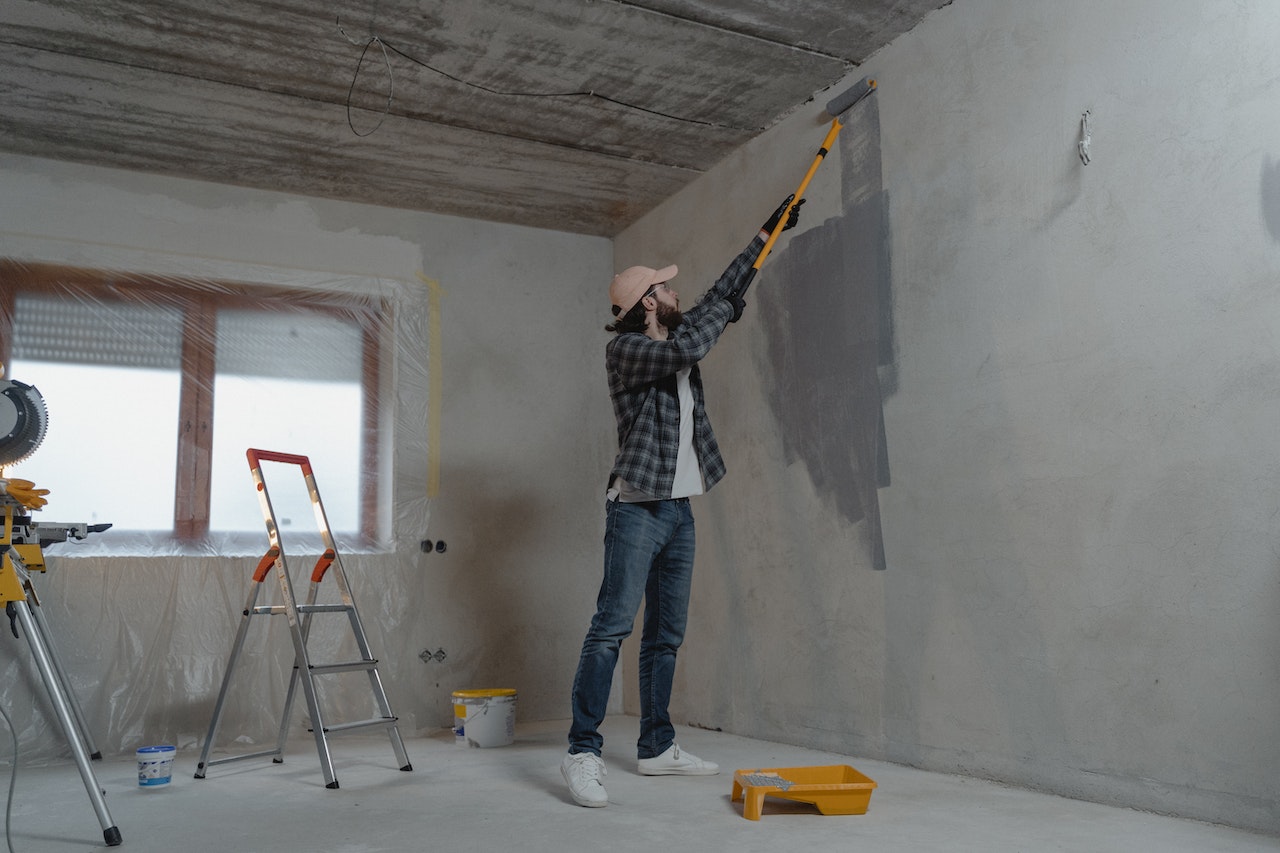How painting and decorating embraced technology to leave other trades behind
Brickies (builders), sparkies (electricians), and chippies (carpenters) are well-established and respected trades in Australia with long histories. Builders constructed the places we live, work and go to school. Electricians delivered the electrified rail systems we have in most Australian capital cities. Carpenters took Australia’s famous timber and turned it into some of Australia’s finest houses and furniture. In most cases they have been doing what they do for a century, sometimes longer. Painters, by comparison, were those guys who stood on a hill with a brush and easel and painted the next hill over. Impressive stuff, but not what we think of when we describe a professional, qualified and licensed painter.
As housing styles have developed, so have the colours we use to paint them, and the technology we use to apply the paint itself. So let’s have a look at some of the technologies that have shaped the painting industry and let’s have a look at what is on the horizon for professional and DIY painters alike.
Trades and technological advancement
When it comes to trades, brick-laying is about as traditional as you can get. Rows of bricks and layers of mortar have been used for millennia as construction materials. The trade has shaped our world, and has a wide range of historical traditions and practices. Bricklaying has seen its fair share of fads and “new tech” like 3D printed buildings, prefabricated concrete panels, and brick-laying vehicles. Even the humble Besser Block is an advancement on the old house brick. But rows of bricks and layers of mortar are still going up in every new housing estate around Australia and there’s no sign of that stopping any time soon.
Electricians are as old as electricity itself; from the first street lights to early trams, the electrical trade is one of the oldest and boasts some of the oldest trade unions to go with it. Advancements in solar power, energy efficiency appliances, off-grid technology, and new electrical control systems have catapulted the trade into the 21st century. But we’re learning from the last generation who grew up without electrified homes and even recessed downlights are an invention of the 1940s (made popular in the 1970s).
Carpentry has come a relatively long way. From the hammers, boards and wooden pegs of the ancient world to the development of metal nails, building with timber has a unique history. But beyond the nail, the next technological advancement was a way to hammer the nail in a bit quicker. Compressed air driven nail guns revolutionised modern construction practices and the telltale ‘psssst’ of a nail being driven in by compressed air is a sound familiar to anyone who have ever lived near a modern construction site. Compressed air tools made their way to a range of other trades, including painting, and were the next big thing for a while.
What about painting then?
By comparison, painting is barely recognisable compared to its younger years; even compared to its heyday in the 1950s and 60s during the postwar housing boom. Brushes used to apply both paint and wallpaper paste gave way to paint rollers after Richard Adams filed the first paint roller patent in 1940, while working for Sherwin-Williams Paint Company. Rollers were a mainstay until air compressors became more widely available to tradies. They took advantage of paint spray guns, which had actually been invented in the late 1800s but were mostly limited to industrial and commercial use like the automotive industry.
The use of compressed air spray guns really took off in the 1980s and 90s when house painters started taking advantage of the speed and excellent finishes the technology offered. But air compressors were large and heavy which meant using them for house painting was impractical in some instances. But with brushes and rollers still available, professional painters had a wide range of options for completing a variety of jobs. But while other industries were content with compressed air tools, the painting industry continued to advance in leaps and bounds.
Gray Company had been incorporated in 1926 and its early years were spent developing lubrication applicators for the automotive industry. In 1948 the company – which had changed its name to Graco – launched its first paint pump; the Paint Master. A decade later, the company launched their first airless paint spray gun, the Mogul 20:1 Hydra-Spray. The company would continue to focus on the industrial and commercial sectors, until the 2000s when they pushed into small business markets and developed affordable product lines for tradie painters. Graco is now a market leader when it comes to airless paint sprayers and their products are the gold standard for paint sprayer technology. No more heavy air compressors, no more “spitting”, and substantially better results all round.
But that’s not all. Tech start-ups like Nix changed the game with their colour sensors, meaning professional painters could match colours or pick colours to suit existing colour schemes. The industry has also moved away from lead-based and oil-based paint toward water-based latex paints that dry quickly and produce fewer strong odours.
Painting continues to advance…
From picking paint, to applying it, technology has shaped the painting industry and painting tradies now have access to transformative technology like airless paint sprayers and digital colour sensors. We’re keen to see if other trades can catch up but until then, we’re proud of the advances the painting industry has made. If you want to find the perfect painter for your project, you can check out the painting tradies using the latest technology right here.

